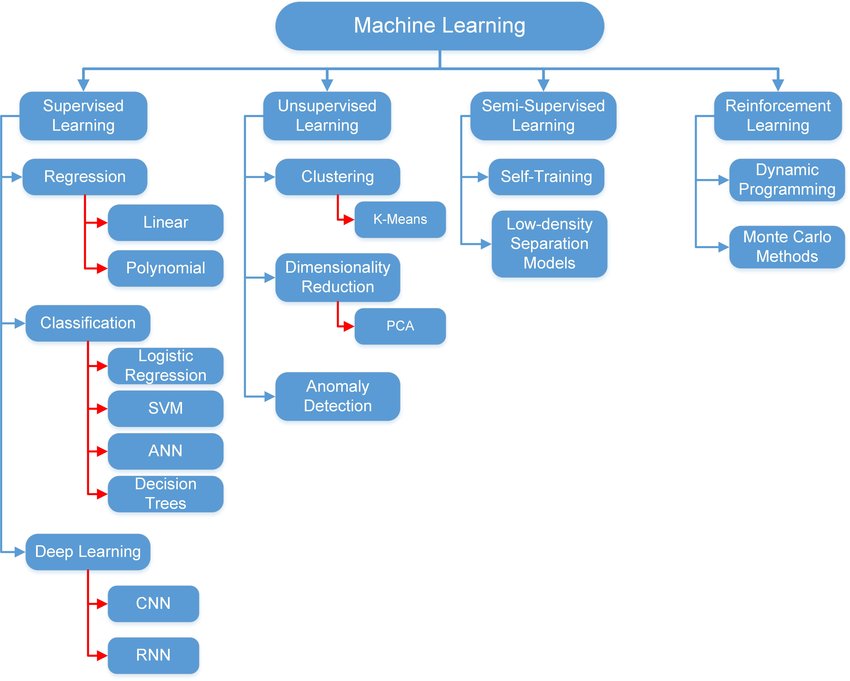Machine learning is a method of teaching computers to learn from data, without being explicitly programmed. This involves developing algorithms that can identify patterns in data and make predictions and/or decisions based on those patterns. The algorithms continuously improve as they receive more data and feedback, thereby allowing them to become more accurate over time.
It is an interdisciplinary field that combines elements from computer science, mathematics, statistics, and other fields; and have applications in natural language processing, computer vision, robotics, autonomous vehicles, and others.
Broadly speaking, the field can be classified into supervised learning, unsupervised learning, semi-supervised learning, and reinforcement learning. The following image from Moubayed et al. provides an overview of different machine learning methods:

Video Explanation
- The video from whiteboard programming provides a short-and-sweet overview of different Machine Learning categories (Runtime: 5 mins)
- Published by the Wired magazine, in this video Hilary Mason explains “What is Machine Learning” to a child, a teen, an undergrad, a grad student, and an expert (Runtime: 26 mins)
- Though a little dated at this point (posted 2017), this video lecture by Andrew Ng on Artificial Intelligence is the new electricity is an excellent watch. In this video he discusses about emerging trends in AI, impact of AI on businesses, how to use AI in products, and the societal impact of AI (Runtime: 1 hr 27 mins)



